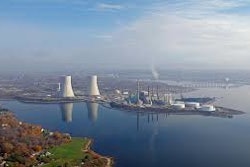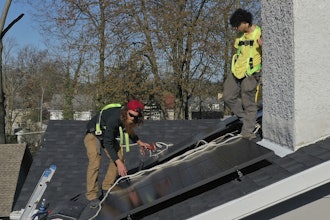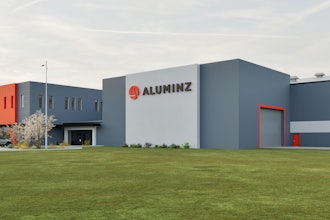The rise in energy prices is an unwelcome reality in today’s manufacturing and business environment. While the rate of price increases for natural gas, heating oil, and other sources may vary from year to year, the upward trajectory is clear. Energy cost reduction strategies are vital to staying competitive.
One important way operational efficiencies can be increased is by harnessing heat from compressed air systems, which are a major component of industrial energy consumption.
The heat generated by compressed air systems can be a very good source of energy savings. In fact, 100 percent of the electrical energy used by an industrial air compressor is converted into heat. 96 percent of this heat can be recovered (the balance remains in the compressed air or radiates from the compressor into the immediate surroundings).
Too often that heat is lost to the ambient environment through the compressor cooling system. The good news is that nearly all of this thermal energy can be recovered and put to useful work to significantly lower a facility’s energy costs.
The most common compressor equipment found in manufacturing plants today is the air-cooled, lubricated rotary screw design. The amount of heat recovered using these systems will vary if the compressor has a variable load, but in general, very good results will be achieved when the baseload air compressor package is an oil-injected rotary screw type design, operating at 185 degrees F or higher.
Oil-free rotary screw compressors are also well-suited for heat recovery activities. As with other compressor systems, the input electrical energy is converted into heat and because they operate at much higher internal temperatures than oil-injected compressors, they produce greater discharge airend temperatures (typically 300 degreesF and higher).
By integrating standard HVAC ductwork and controls, warm air from compressors can be harnessed for many purposes. Capturing warm air is simply accomplished by ducting the air from the compressor package to an area that requires heating. The air is heated by passing it across the compressor’s aftercooler and lubricant cooler. This extracts heat from both the compressed air and the lubricant, both improving air quality and extending lubricant life. Nearly all current models have cabinets that channel airflow through the compressor, and many current designs exhaust warm air out the top of the unit. This simplifies adapting compressors to space heating to merely installing ducting and (sometimes) a supplemental fan to handle duct loading and to eliminate back pressure on the compressor cooling fan.
With rotary screw compressors running at full load, it is possible to “harvest” approximately 50,000 BTUs of energy per hour for each 100 cfm of capacity. This value is based on 80 percent recoverable heat from the compressor and a conversion factor of 2,545 BTU/bhp-hr, although recovery efficiencies of up to 90 percent are frequently attained. The resulting air temperatures are often 30 to 40 degrees F higher than the cooling air inlet.
Space heating can be regulated easily using thermostatically controlled, motorized louver flaps for venting, to maintain a consistent room temperature. When heating is not required, the hot air can be ducted outside the building to reduce cooling costs.
Rejected heat can also be used to heat water or other fluids. Air-cooled, oil-injected compressors can be used to heat water or other process fluids. Oil-injected and oil-free water-cooled compressors can also be used for this type of heat recovery. The best efficiencies are usually obtained from water-cooled installations. These systems can effectively discharge water at temperatures reaching 160 degrees F. Discharged cooling water is connected directly to a continuous process heating application for year-round energy savings (such as a heating boiler’s return circuit).
The key to heat recovery effectiveness with water-cooled compressors is attaining a “thermal match” between the heat being recovered and the heat that is needed on a regular (hourly) basis. The temperature range and the approach temperature must be in line. This needs to be an engineered solution.
Most process applications in production facilities can benefit from heat recovery from compressed air systems throughout the year, not just during the cold weather months. In most space heating applications, heat is required during three seasons and during the warmer months, removing the heat of compression will make compressor room temperatures much more comfortable. Maintaining proper ambient conditions will also improve compressor efficiency and facilitate air treatment. Moreover, controlling operating temperatures will extend compressor air equipment life.
Generally, the larger the system, the faster the payback, but payback on heat recovery also depends on the amount of rejected heat that can be used and the cost of the alternative energy source. After factoring in the installation cost, it’s possible that smaller systems will not provide enough recoverable BTUs of energy to make the investment worthwhile.
Beyond energy savings, an important argument can also be made that heat recovery activities benefit the environment, as they reduce the carbon footprint of a plant. As energy policies and regulations continue to evolve in the United States and other countries, these considerations are only expected to become more important. It is only by evolving with these regulations and embracing alternative ways to recover energy wherever possible that compressed air system users can hope to squeeze every ounce of efficiency out of each BTU they pay for.
To download a whitepaper on heat recovery, visit www.kaeser.com/whitepapers.























